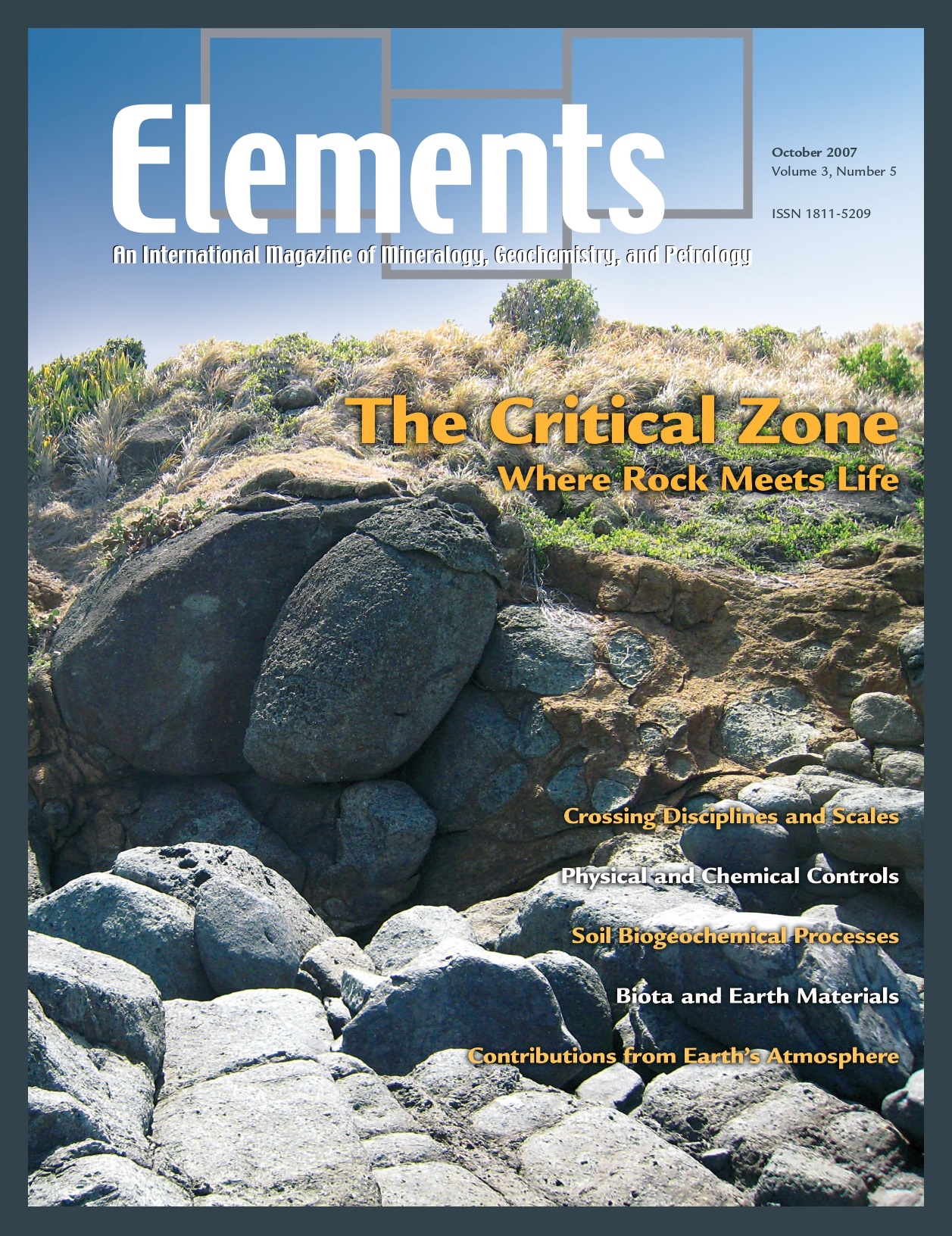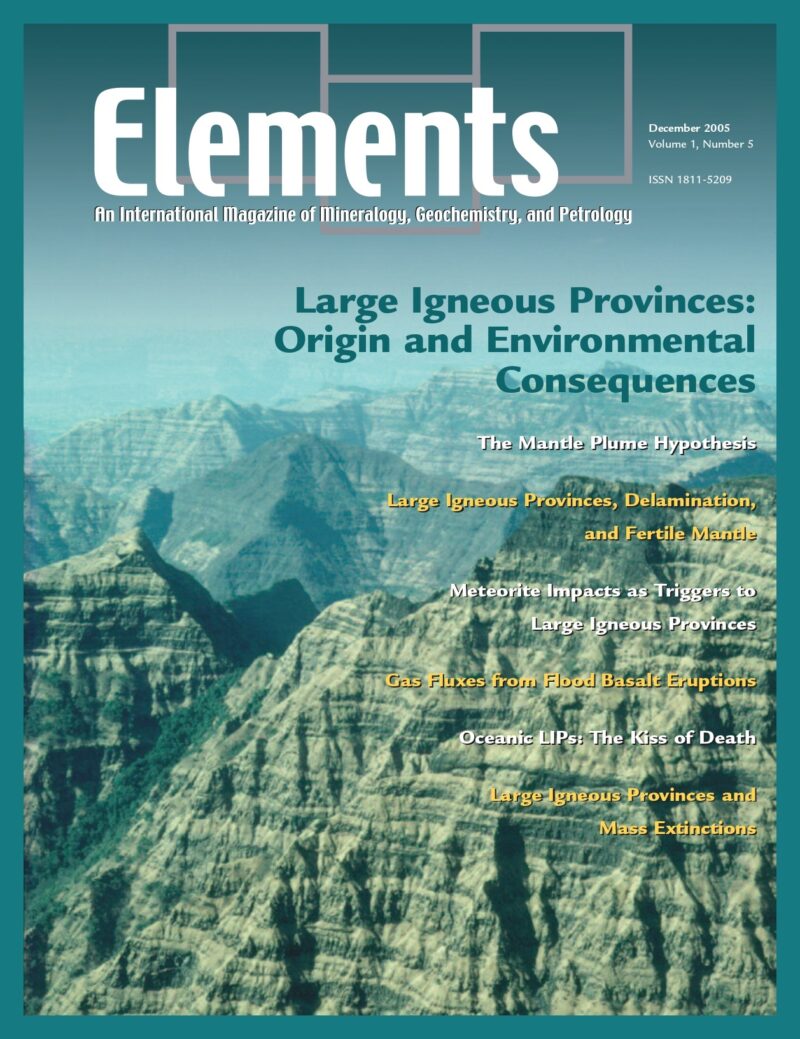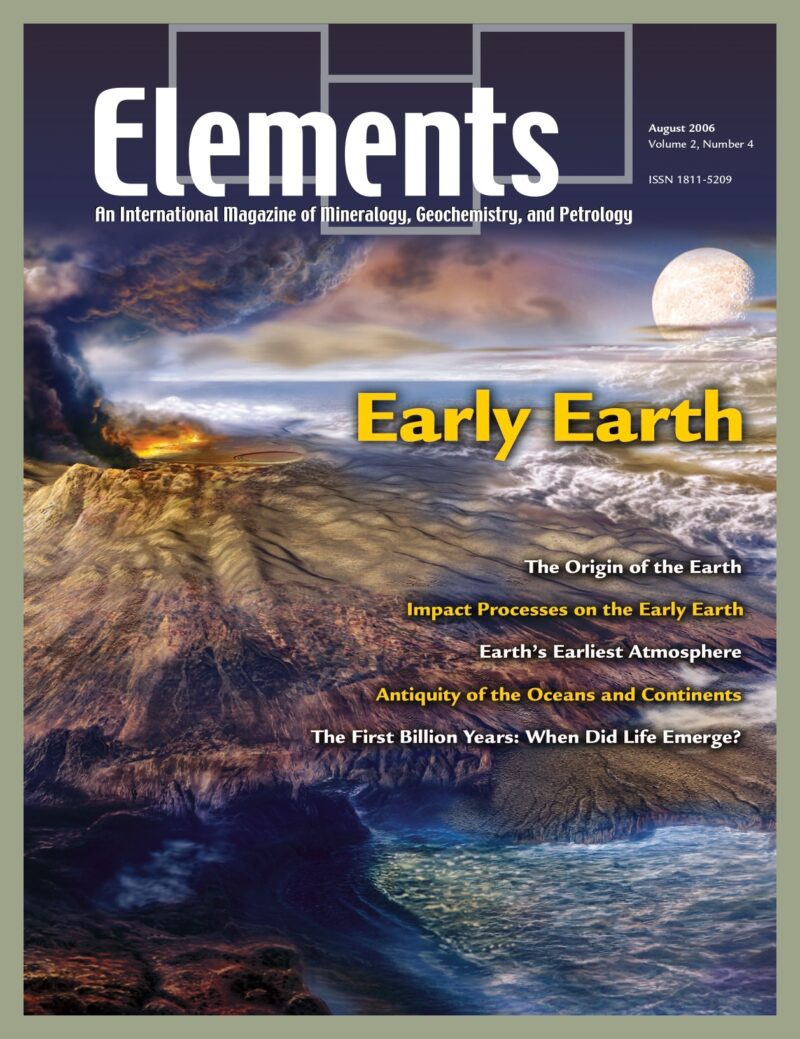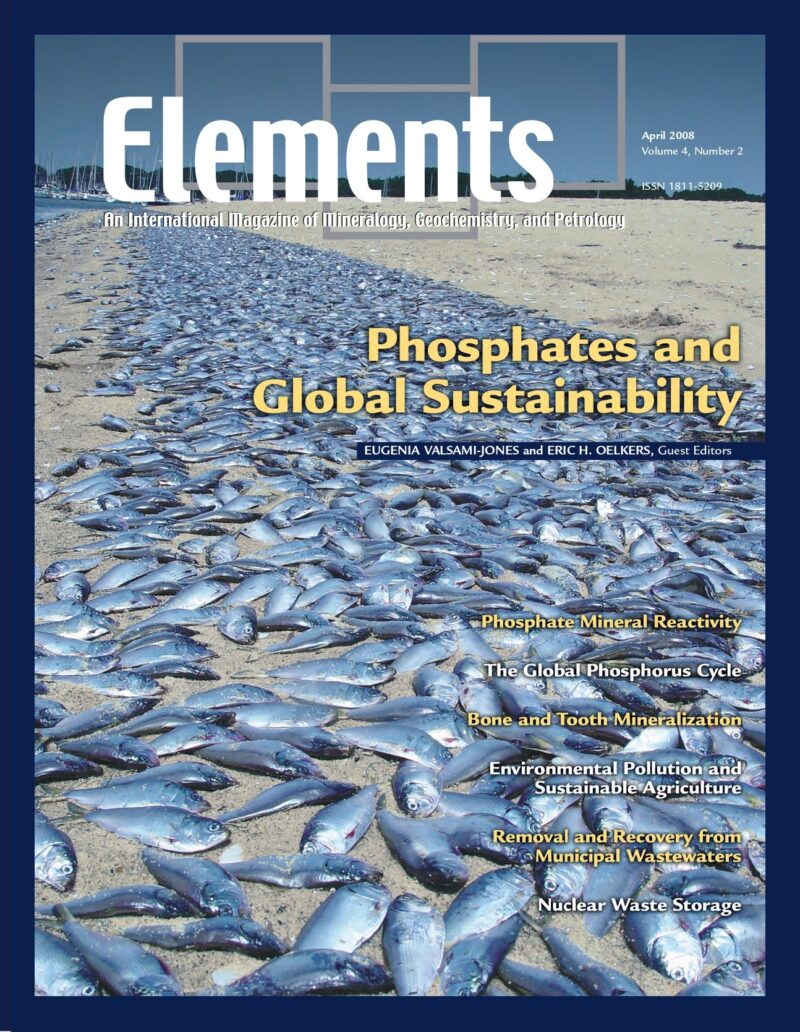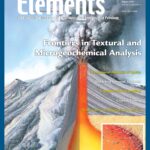
Frontiers In Textural And Microgeochemical Analysis, August 2007, Vol. 3, No. 4
June 28, 2024
Platinum-Group Elements, August 2008, Vol. 4, No. 4
June 28, 2024The Critical Zone, October 2007, Vol. 3, No. 5
$20.00
The Critical Zone (CZ) encompasses all fluid, mineral, gaseous, and biotic components from the outer envelope of vegetation down to the lower limit of groundwater. It supports much of life on Earth.
The Critical Zone
October 2007, Vol. 3, No. 5
The Critical Zone (CZ) encompasses all fluid, mineral, gaseous, and biotic components from the outer envelope of vegetation down to the lower limit of groundwater. It supports much of life on Earth. Important, relevant societal challenges related to CZ science to be addressed in the next decade are: (1) what processes control fluxes of carbon, particulates, and other reactive gases into and from the CZ? (2) how do weathering processes in the CZ nourish ecosystems? (3) how do chemical and physical weathering processes shape the CZ? and (4) how do biogeochemical processes in the CZ govern long-term sustainability of water and soil resources?
Why You’ll Love Elements Magazine:
- Expert Contributors: Articles written by renowned researchers in the field of geoscience.
- Engaging Content: Join a community of readers who are passionate about Elements.
- Exceptional Quality: Each issue is printed on high-quality paper with stunning visuals and detailed illustrations that bring complex scientific concepts to life.
Order your copy of the October 2007 issue of Elements magazine today and explore the critical zone.
Related products
-
Large Igneous Provinces: Origin And Environmental Consequences, December 2005, Vol. 1, No. 5
$20.00Large igneous provinces record major outpourings of igneous rocks, both on the continents and in ocean basins. Their origin is still vigorously disputed, with models invoking mantle plumes, thermal effects of the lithosphere, and meteorite impacts.
-
Early Earth, August 2006, Vol. 2, No. 4
$20.00The earliest Earth was a strange inhospitable world, yet transitions occurred culminating in the evolution of life within the first billion years. The preservation of a sparse and ambiguous rock record has encouraged debate.
-
Phosphates And Global Sustainability, April 2008, Vol. 4, No. 2
$20.00Phosphorus is a unique element: it is essential to the existence of all living forms, and as such controls biological productivity in many terrestrial and marine environments; but when in excess, it leads to uncontrollable biological growth and water-quality problems. This has become a common environmental issue, resulting from our careless use of phosphorus in agriculture, yet phosphate ore deposits, from which fertilizers are produced, are a finite natural resource.

